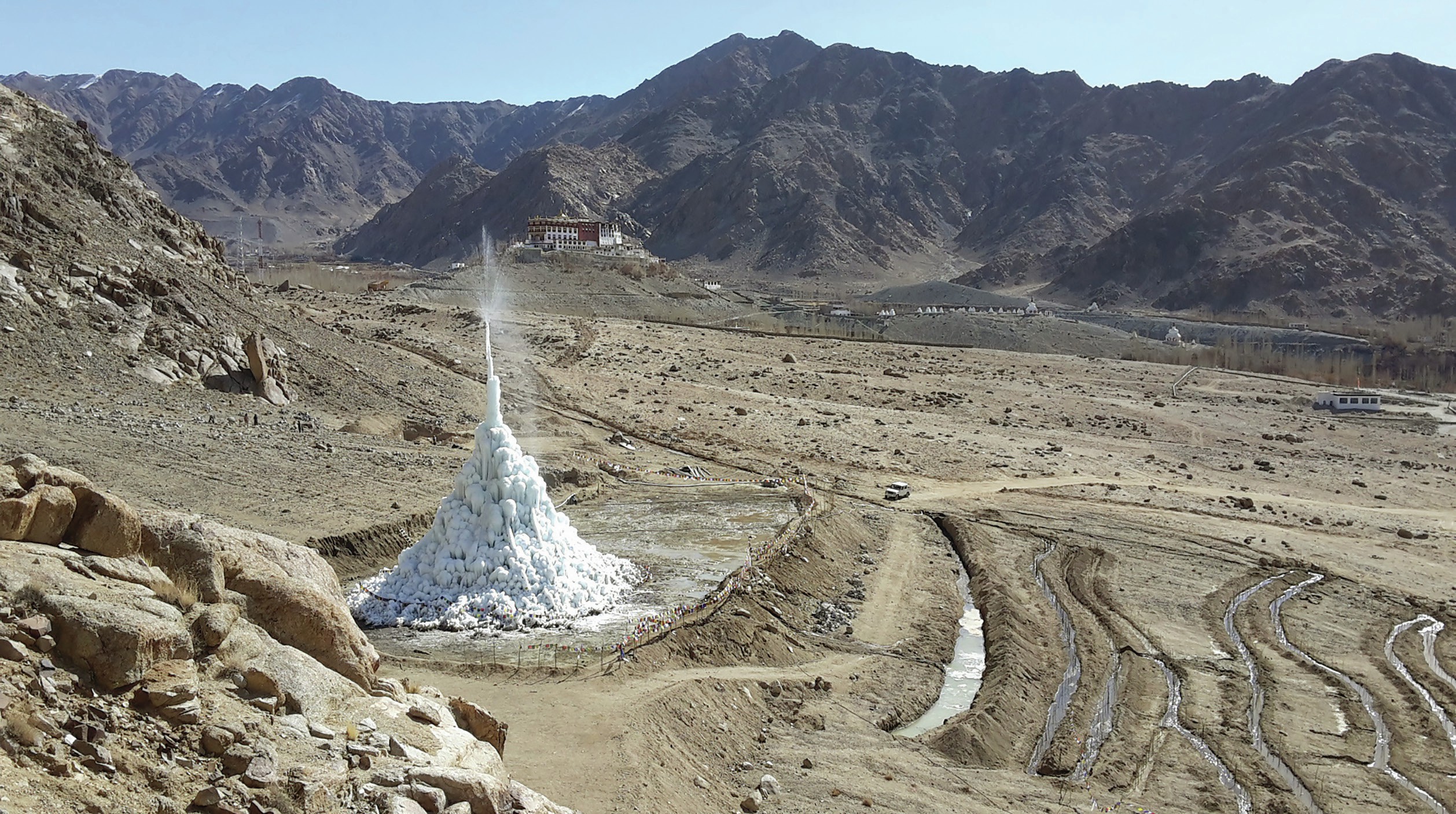
Ladakh is a high-elevation landscape in northern India, in the rain shadow of the Himalayas. Much of the region lies above 3,000 m but receives less than 100 mm of rainfall a year. This is a highland desert where communities have traditionally relied on meltwater from glaciers to irrigate crops and water livestock.Meltwater supplies are becoming increasingly erratic, however, as the region’s glaciers shrink.
One strategy to increase water security in the Ladakh region involves creating large artificial ice masses to store water for the summer growing season. Plastic pipes bring meltwater down to the villages where gravity pressure is harnessed to spray water high into the air during the bitter winter nights. It freezes into a conical shape as it falls — an ‘ice stupa’. The largest ice stupas are 30–50 metres high.
Your organisation does not have access to this article.
Sign up today to give your students the edge they need to achieve their best grades with subject expertise
Subscribe




